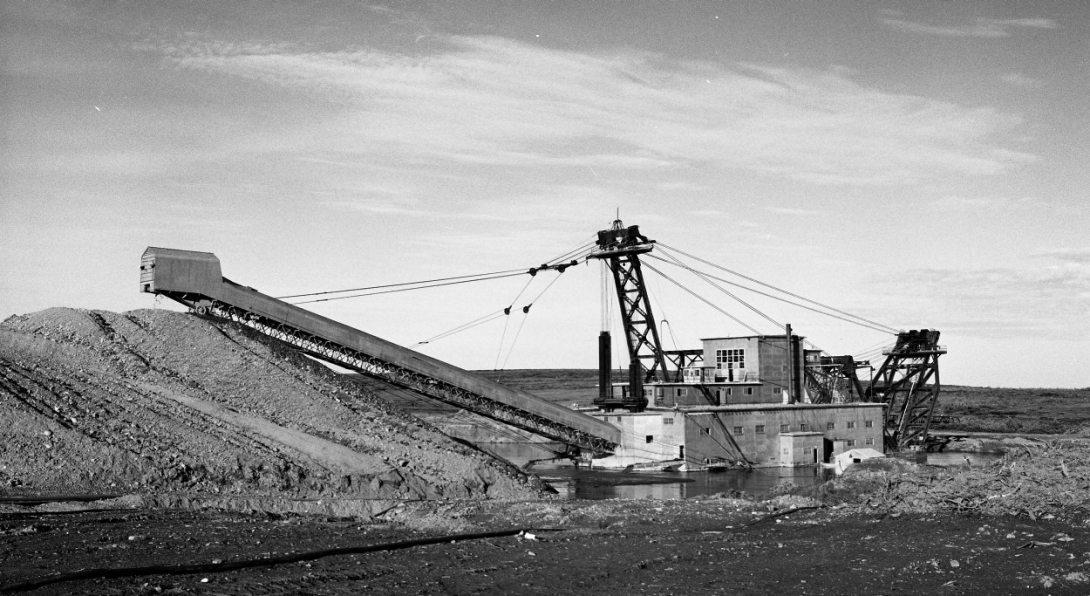Published in Mining World magazine, March 2015
Not many people understand the importance of dredges, the major role that they have played in the development of the world’s economic trade system, and the role that they continue to play in our global economy. However, dredges are used for a number of essential processes such as waterway navigation, aquaculture, environmental remediation, land restoration, land development, and many other applications – including mining.
DREDGE CLASSIFICATIONS – HYDRAULIC OR MECHANICAL
While applications and models vary, most dredges may be placed into one of two basic classifications – hydraulic or mechanical. Hydraulic dredges utilize a pumping system that employs water as its means of material transportation. Alternately, mechanical dredges use mechanical means such as a clamshell to remove the dredged material, and require a secondary means of transportation. While functionally similar, there are important differences between hydraulic and mechanical dredges in terms of their deposit reach capabilities and their requirements for material transport and material delivery.
Deposit reach: Hydraulic and mechanical dredges both mine and move differently within the deposits. Mechanical dredges tend to pothole dredge, meaning they are in one area for a period of time, and they create craters of holes throughout the deposit. Hydraulic dredges are designed to swing through the material in order to keep the excavation device engaged in the material for consistent bulk feed to the dredge pump. The wider the swing arc for the dredge, the more production time the dredge sees because it stays engaged in the material. The addition of a barge to add length to a dredge is a common feature used to increase the overall swing width of a hydraulic dredge.
Material transport: A mechanical dredge requires a secondary means of transportation; i.e., after the dredge acquires the mined material, it must deposit it into a system that will transport the material for processing. The transport system may be a barge, a separate pumping station, conveyors, etc., and this secondary transport can incur significant additional costs associated with re-handling the dredged material. A hydraulic dredge, on the other hand, uses a pump that is already part of the dredge system to provide bulk transport of the dredged material directly to a processing system.
Material delivery: Mechanical dredges tend to provide consistent material delivery when the operator creates relatively steady cycle times, allowing a mechanical dredge to consistently produce the amount of raw feed into the mining process. Hydraulic dredges more commonly work off peaks and valleys in terms of material delivery because many factors can affect the material load consistency in the system. Examples include underwater cave-ins that can overload the pumping system, causing the dredge operator to pump a lighter density to ensure the material does not settle out and plug the pipeline. Hydraulic dredge operators also employ clean-up cuts after digging cuts, swinging the dredge back across the material face as part of the swing cycle. Clean-up cuts are generally less productive than digging cuts.
GENERAL DREDGING APPLICATIONS
Waterway navigation and maintenance: Waterway navigation encompasses port development, port maintenance, waterway creation, and waterway maintenance. This not only applies to rivers or sea ports, but also to lakes, streams, and marinas. While smaller lakes and streams generally are referenced as recreational dredging, they still play a major role in dredging, and they have an effect on local economies. It is these applications that the layman generally thinks of when hearing the word “dredging.” Typically, the general population sees a dredge as an underwater vacuum cleaner, and most commonly associates it with port or waterway maintenance. And it is true that without the development of port systems around the world, the global economy would not have grown. In the United States, port systems create approximately 13 million jobs, all of which in some way have been touched by dredging. It also is worthy to mention that many countries rely on dredging for their military to maintain navigable channels for their naval fleets. It could be argued that no other single factor has prompted continual growth of the world’s nations – both in their economies and in their nations’ overall well-being. Without port systems, the only form of trade would be the barter system. Without proper funding, port systems would decline, along with the region’s overall economy. Figure 1 illustrates a thriving port system, while Figure 2 displays a distressed port system.
Environmental: Environmental dredging projects may be very costly because of the treatment required for the dredged material, yet they normally involve only a small quantity of material to be dredged. Nevertheless, because the treatment process usually requires lower flow rates or lower production rates, the process can be fairly lengthy to finalize. These projects are known for their high cost requirements due to the need to properly process the material, and their relatively lower production rates due to “surgical” dredging, or the removal of targeted material. Especially in the U.S., discussion of environmental dredging often brings Superfund projects to mind.
Aquaculture: Aquaculture – maintaining ponds that are designed for breeding fish, shrimp, and other marine life – is somewhat uncommon as a form of dredging. Yet, while this type of dredging may not have an overall impact on the global economy, it should be considered as an application that affects local economies, such as shrimp farming in Ecuador or fish farming in Honduras. Dredges are used in this capacity to clean ponds of decaying byproducts from the breeding process and to keep water clarity at acceptable levels. Many companies involved in aquaculture have been forced to close because poor water conditions have led to disease and eventually death of the marine life they were harvesting. If the companies had instead used dredges to maintain proper water quality, they might have benefited their local economies by allowing the seafood industry to thrive.
Restoration: Dredges may be used very effectively for restoration of areas such as beaches that have been damaged from major weather events such as hurricanes. As a topic, restoration dredging has seen increased interest, yet it still is only utilized minimally at present. This is chiefly due to the costs of effectively providing restoration services and because of the incredibly large areas needing restoration.
Land creation: Dredges have been used for many years for land creation, such as in the berm project that was implemented after the BP oil spill in the Gulf of Mexico and the islands created in Dubai. While there was disagreement on the scope, purpose, and parameters of the Gulf berm project, it still is a fine example of what can be accomplished in a focused and responsible dredging project. The berm project also helped define the relationship between restoration and creation.
MINING DREDGING APPLICATIONS
Compared to the previously mentioned applications, dredges used in mining processes may be used for the largest variety of applications, but they rarely are considered a major part of the dredging industry. The layman may not even be aware of these dredges as part of an operation because they are seldom seen. While aggregate dredging operations exist all over the U.S., the high walls, levees, or berms that protect them also hide the dredges from view of passersby. At the same time, the mining of sand and gravel is critical for a country’s infrastructure, and is the most common application for dredges used in mining processes.
Dredges are heavily used in the minerals mining process, as well, including well-known minerals such as gold, diamonds, tin, and nickel. Less commonly known mineral mining operations also benefit from the application of dredges as part of the mining process, including Titanium Dioxide (TiO2), phosphate, salt, and clay mines.
Certain aspects of the mining process can create a need for an environmental dredging application. An example of this would be the use of a dredge to process a mine’s tailings. While this may be considered a secondary mining application, it also bridges the gap and may be classified as environmental dredging in many instances. Dredging operations in the Andes Mountains offer a current example of the use of a dredge in a mining/environmental application. While the majority of copper mining takes place using surface mining techniques, the tailings generated from surface mining create millions of tons of waste, or byproduct, that are contained within tailings dams high in the mountain ranges. The possibility of these tailings dams becoming too full and breaking has led to the use of dredges to transport tailings out of the dams and to processing centers located at lower elevations. The practice ultimately reduces the chances for a potential disaster for nearby cities in lower elevations. A similar example can also be found in the handling of tailings from the mining of oil sands in northern Alberta, Canada, where the tailings are transported to holding areas for future processing.
Dredges for primary mining applications: Dredges can be used in an active or primary mining role. The active mining side involves the dredge as a primary excavation device for the intended final product.
Many mining processes begin at the earth’s surface, mining above the water table. As a pit grows deeper, however, the mining process goes below the water table, and a dredge may be brought in to further excavate material, and extend the life of the deposit.
With the current television industry’s coverage of gold mining, dredges have become better known as a means for mining gold – especially for recreational gold mining. But massive dredges have been used for more than 100 years in true, large-scale gold-mining applications. Figure 3 shows a recreational type dredge, while Figure 4 shows a true gold-mining dredge.
In primary mining, the excavation method is a key component to the operation’s success. Mining processes typically occur in virgin material, and the material’s compaction tends to be quite high. Mining dredges are generally outfitted with very high-powered excavation devices in order to effectively mine the deposits. The most effective dredge excavator types for highly compacted materials include bucket ladder, bucket wheel, or dipper dredges, as shown in Figures 5 -7.
Sand and gravel dredges: Sand and gravel mining is still the most commonly known application for mining dredges. The types of dredges used in this mining process, however, can vary significantly. Hydraulic and mechanical dredges are both used in sand and gravel mining deposits. The determination of the ideal dredge type for each application is generally based on the deposit’s geology, the maximum mining depth and the cost of the dredge. A mechanical dredge is commonly used in very coarse deposits that include cobbles, rocks, and boulders. For a coarse deposit, a hydraulic dredge would require a large pump and high horsepower to pump the coarse material, which will greatly affect the cost of the dredge.
The most commonly used mechanical dredge for sand and gravel mining is a clamshell dredge, which is able to handle oversized material very well and can also mine to extreme depths, exceeding 200 feet (61 m). Drawbacks of a clamshell dredge are the cycle time as the operator digs deeper (decreased production), the initial capital cost, and assembly time. Figure 8 provides an example of a clamshell dredge.
Hydraulic dredges in mining: Hydraulic suction dredges, with or without a cutter head, are more common mining dredges for sand and gravel deposits than mechanical dredges. And the cutter suction dredge (a hydraulic dredge with a cutter excavation device) is by far the most common hydraulic suction dredge in the sand and gravel industry. Depending on the compaction of the material, the excavation power and type of cutter can vary greatly. Figure 9 shows a replaceable-edge serrated-edge cutter that is used in loose or semi-compacted materials. The serrated edge portions are wear items, and new edges are welded on directly to the blades. Figure 10 shows a pin tooth cutter that is a bit more aggressive and is used in compacted materials. On this style of the cutter, the teeth are pinned on, similar to an excavator bucket, and allow for quick replacement of the worn teeth.
Deep mining with hydraulic dredges: Recent trends toward deeper mining have prompted the industry to design hydraulic dredge options that compete with clamshell dredges. For instance, based on a customer’s application, DSC Dredge manufactured a sand mining dredge in 2009 that has the capability to dredge to 200 feet (61 m) deep. The dredge was equipped with digging jets rather than a cutter head because the sand in this application is free flowing, and high excavation forces are not required to mine the deposit. Figure 11 illustrates this deep mining hydraulic dredge.
Pump placement: Hydraulic mining dredges can also vary in overall design depending on the placement of the dredge pump. With a hull-mounted dredge pump, the system becomes increasingly less efficient as mining depth increases, due to suction loss. As a rule of thumb, hull-mounted dredges are designed only to dig to a little more than 50 feet (15.2 m). At greater depths, the hydraulic dredge must be designed with a submerged pump or some form of system to overcome suction losses. The preferred design when dredging depths exceed 50 feet (15.2 m) is a submerged pump. Figures 12a and 12b provide an example of a ladder-mounted submerged pump. A less common and less efficient alternative is the use of suction jets in deeper dredging depths to combat suction losses.
Additional mining dredge considerations:
Power choices: Dredges may run on diesel or electric power. If electric power is available, it has become the preferred choice due to its cost effectiveness, environmental benefits and ability to tolerate cold climates. DSC Dredge has performed numerous studies based on the cost of diesel fuel versus the cost of electric power, and time and time again has found that electric power is the most cost-effective choice. In addition, electric power alleviates some environmental concerns, including emissions and potential fuel spills on water.
Mine planning: The mine plan is becoming more important for the miner, as permitting for mine deposits becomes more challenging. In the U.S., obtaining permits for additional land to mine is not as easy as it once was, and this is also a factor for dredges, as they are being designed to mine deeper. Mining companies must examine the deposit in great detail to understand the geology of the mine site. It is common for deposits to have varying lenses of materials that can change dramatically with depth and location. The more data a mine site can provide to a dredge manufacturer, the more accurately the machine will be designed to effectively and efficiently mine the deposit.
Mine survey: While surveying equipment is heavily employed in the navigational and environmental dredging industries, it is not used as much in the mining industry. With the evolution of newer and more cost-effective technologies, the dredge mining industry is likely to invest a little more in surveying, as gaining additional land for mining applications is becoming more difficult. It is no longer an option to leave any material behind that can be efficiently mined and processed.
THE IMPACT OF DREDGING ON THE GLOBAL ECONOMY
The dredging industry certainly affects the global economy, but many factors make it difficult to put real numbers to its particular effects. Since the dredge manufacturing, contracting, consulting, and service industries are made up of many private firms, public figures are difficult to obtain. Private firms are less likely to disclose their financial results due to competition, and the figures they do make available are typically hearsay and unworthy of a true representation of their results.
There is, however, anecdotal information relevant to this discussion from a 2009 U.S. Army Corps of Engineers (USACE) budget shortage in the operation to dredge the mouth of the lower Mississippi River near New Orleans, Louisiana. As a direct result of a US$20 million budget shortage, there was a 1-ft (0.3 m) draft reduction instituted for commerce passing through the river. The Mississippi River sees approximately US$85 to US$100 billion in foreign trade pass through the mouth of the river on an annual basis. The 1-ft (0.3 m) of draft reduction for ships can result in a range of US$250,000 to US$800,000 loss of cargo per ship. With an average of 6,000 vessels per year and 68 million tons of cargo, it is quite obvious that the negative financial impact of a draft reduction in a major commercial waterway can significantly affect a country’s waterborne commerce.
In reviewing the available published data on dredging figures and international trade, it becomes increasingly obvious that dredging has historically played a major role in the development of the global economy, and in fact stills plays a huge role in global trade. The International Association of Dredging Companies (IADC) reported an estimated €11.68 billion of dredging work for the Fiscal Year 2013. However, this report only outlines the hard contract revenues and does not include the overall impact on the economy based on additional economic factors that generate revenues for the many service providers to the contracting firms. Service providers include, but are not limited to, dredge manufacturers, repair yards, component suppliers, fuel suppliers, labor providers, hotels, food suppliers, transportation providers, and many others that would add significantly to the effect of dredging on the general economy.
While dredging goes on largely behind the scenes, the bottom line is that the overall impact of dredges and the dredging industry on world trade as it is today has been significant, and that global support continues. Our world has grown economically, scientifically, and technologically due to a global education and trade exchange that was initially created through our port systems. Highway infrastructure, made possible with mineral dredging, is obviously critically important for movement of goods within a landform, as well. But without ports there would be no way of effectively trading with multiple nations because of geographical limitations and transportation restrictions. Without the development of a global port system, the world would have reverted back to a system of bartering, and each nation would only fulfill the needs required by that particular nation or nations limited by trade through overland transport systems.





